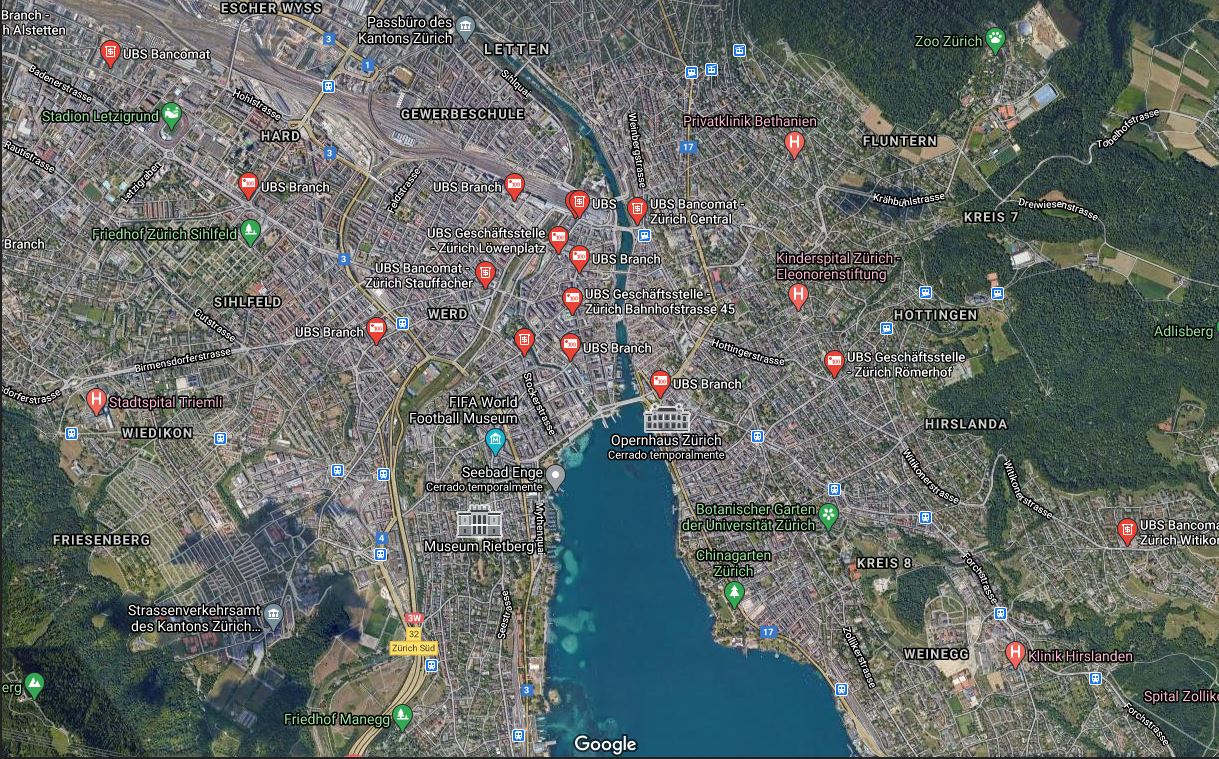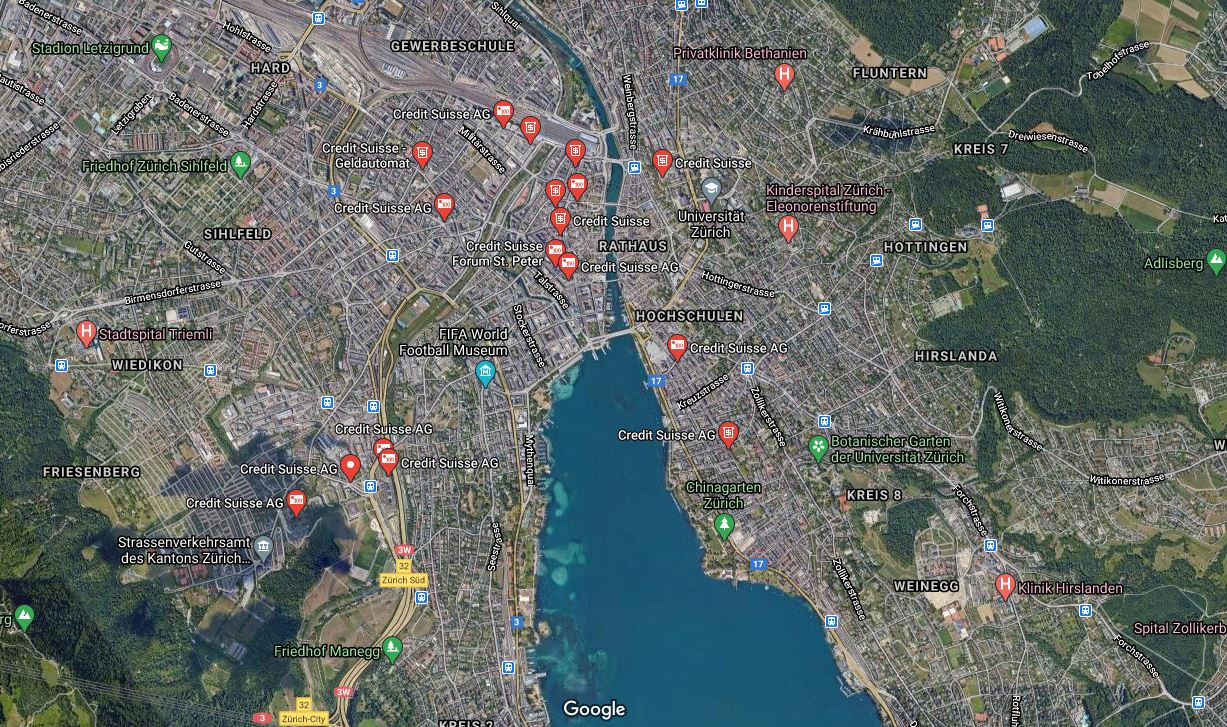Evaluating future-proof conversion of the portfolio of vacant bank branches in Zurich
Authors
Claudio Martani1, Noemi Fiorot1, Andrea González2, Bryan T. Adey1, Joris Van Wezemael2
1 Infrastructure Management Group (IMG), Institute of Construction and Infrastructure Management (IBI), ETH Zürich, Stefano-Franscini-Platz 5, 8093 Zürich, Switzerland
2 Spatial Transformation Laboratory (STL), Institute for Spatial and Landscape Development (IRL), ETH Zürich, Stefano-Franscini-Platz 5, 8093 Zürich, Switzerland
Summary
Recent works (e.g. Fiorot, 2020, and Calen, 2020) have investigated the possibility of using real options methodology (as from Esders et al., 2020 and Martani et al., 2016) to optimise the design of single buildings, considering the uncertainty on future demand, and accounting for the impacts on multiple stakeholders, these mainly being the owner and the users but, in part, also the close neighbourhood and the wider society.
Despite encouraging results, these approaches require further development to be suitable for supporting decisions on large-scale building portfolios. The topicality hereof is particularly high, considering the looming disposal of a vast set of offices from portfolios in the near future due to the need of many companies for technology-enabled working modes, e.g. remote working, to reduce operative costs.
Particularly in Switzerland, a relevant number of bank branches are in the process to be closed, posing the question of how to optimally convert these spaces. At the beginning of 2020, UBS had approximately 300 operative branches across the country, 48 thereof in Zurich (a sample is reported in Figure 1). 28 of these were already closed last year, and further closures are planned in the months to come, affecting around 150 staff. The coronavirus pandemic was not the only direct cause for this decision but it “accelerated the trend towards digitalization”, said UBS Switzerland director Axel Lehmann in an interview in the Neue Zürcher Zeitung in January 2021.

Switzerland’s second largest bank - Credit Suisse - announced last year that it will cut 39 of its current 146 branches, about 30 of which are located in Zurich (a sample is reported in Figure 2), as part of plans to save CHF 100 million annually.

In face of such a large-scale divestment in office properties, a strategic optimisation of their conversion would be desirable to maximise the net benefit, not only for the owners (i.e. both the banks selling the branches and the new owners) but also for a wider set of involved stakeholders, e.g. considering the social and economic impact on the population of Zurich and the environmental impact which is of interest to society at a global scale.
Abstract
The objective of the research project is to adapt the model of Fiorot (2020) and Calen (2020) on the optimisation of interventions on single buildings, for the optimisation of interventions on the portfolio of vacant bank branches in Zurich considering the uncertainty of the future demand. This includes efforts to further develop the current model to:
- Spatially map all the spaces potentially let vacant from the disposal of bank branches in the city,
- Consider a large set of possible use configurations to convert the spaces.
- Account for a wider set of impacts on the city and society on top of those on the buildings’ owners and users.
The scope of this work is to determine the optimal set of interventions for the portfolio of vacant bank branches in Zurich to maximise the net-benefit of multiple stakeholders, taking into consideration future uncertainty in demand. To this end, a 7 steps process will be implemented:
- Identify the features and location of the vacant bank branches in Zurich by integrating the information on the UBS branches, CS branches and the GIS map of Zurich;
- define the service to be provided by the buildings for multiple stakeholders, i.e. the owners, users, directly and indirectly affected public. This will be done through detailed consideration of economic, social and environmental impact;
- develop an objective function to be used to determine the optimal interventions, considering the impact on the services defined;
- develop a set of use configurations for the space, e.g. residential, enhanced residential for teleworking, co-working and video conferencing spaces, nursery schools, drop off stations for e-commerce, with pertinent intervention costs for the transitions, as well as the effort required to modify the buildings (i.e. reconfiguring the space appropriately) for each new use;
- model the uncertainty over the variable parameters affecting the future prevalence of remote working, according to their locations. This will require the development of a dynamic model able to capture the mutual influences of technologically, socially, legally, and economically evolving conditions, influencing the future demand of each configuration;
- identify possible building management strategies (i.e. the triggering conditions to exercise the interventions on a branch); and
- develop a dynamic model to account for the impacts on all stakeholders, i.e. a Monte Carlo-based simulation model to simulate future scenarios and identify the optimal combination of modifications (i.e. simulating costs and benefits for all alternative interventions considering all possible futures according to their probability of occurring).
Selected Literature
Calen, N., 2020, Evaluation of investments on a future-proof building portfolio, MSc project. ETH Zürich.
De Finetti B., Theory of Probability. A Critical Introductory Treatment, Wiley, Chichester, 1990 (optional)
De Neufville, R. & Scholtes, S. (2011), Flexibility in Engineering Design. MIT press, Cambridge (MA)
Ellingham, I. & Fawcett, W., 2007. New generation whole-life costing: Property and construction decision making under uncertainty, Routledge.
Esders, M., Della Morte, N. & Adey, B.T., 2015. A Methodology to Ensure the Consideration of Flexibility and Robustness in the Selection of Facility Renewal Projects. International Journal of Architecture, Engineering and Construction, 4(3), pp.126–139.
Esders, A., Martani, C., Adey, B. (2020). Evaluating initial building designs considering possible future changes and decision flexibility: The example of the new PET centre of the university hospital of Zurich. International Journal of Architecture, Engineering and Construction;
Fiorot, N., 2020, Evaluation of the impact of flexible designs in coping with the uncertain future demand for office space, MSc thesis. ETH Zürich.
Geltner, David, and Richard De Neufville. Flexibility and real estate valuation under uncertainty: a practical guide for developers. John Wiley & Sons, 2018.
Martani, C. et al., 2016. Design with Uncertainty: The Role of Future Options for Infrastructure Integration. Computer-Aided Civil and Infrastructure Engineering, p.n/a–n/a. Available at: http://dx.doi.org/10.1111/mice.12214.
Martani C., Cattarinussi L., Adey B. (2018), A new process for the evaluation of the net-benefit of flexible ground-floor ceiling in the face of use transition uncertainty. Journal of Building Engineering 15 156–170
Martani, C., 2019, Classes of the courses of “Real option for infrastructure management”, ETH Zürich
